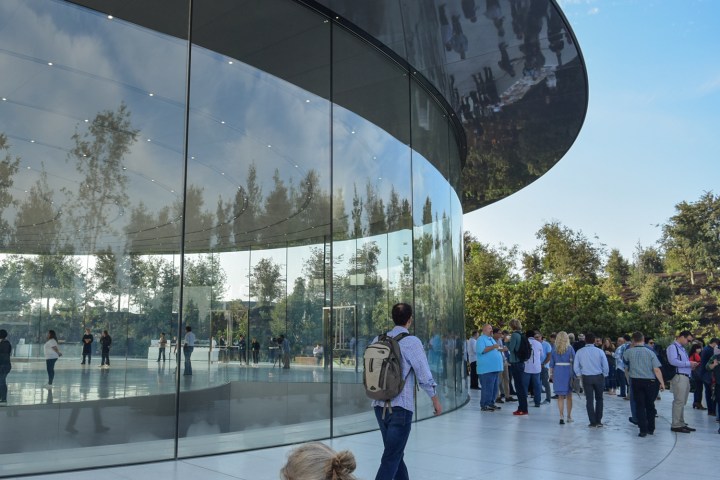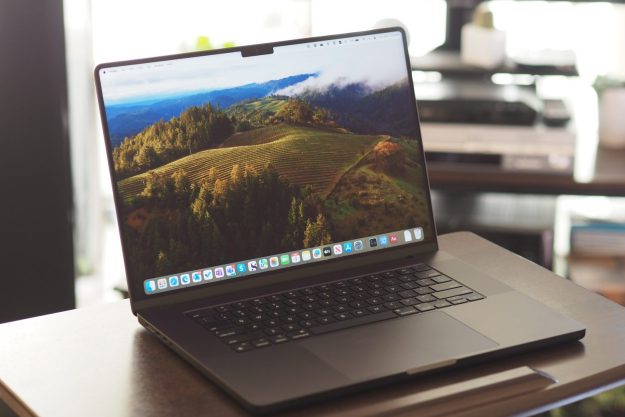
It’s been well over five years since the Mac Pro has shown its face. Since then, Apple’s reputation as the go-to option for creative professionals has been shaken. But in June at WWDC 2019, Apple revealed a plan to win back that audience: the Mac Pro 2019. We now have all the details on the brand new high-end hardware, which comes with a unique modular design and some powerful internal specs — and goes on sale December 10. Here’s everything you need to know
Price and release date
The new Mac Pro will start at $5,999, making it the most expensive Apple product to exist. There will be numerous configurations possible, of course, all customizable and accessible within this new modular design.
In 2018, Apple had an extended interview with TechCrunch that focused on the Mac Pro. One of the purposes of this interview was to confirm that the product would not be released in 2018. This was partly to squash the rumors that the Pro would show up 2018, but also seemed a direct confirmation that the new version would come in 2019. With an uncharacteristic preview, Apple straight-up called it a “2019 product.” Now we know that to be true.
???? pic.twitter.com/JUIFMMcWUF
— Marques Brownlee (@MKBHD) December 8, 2019
Until Marques Brownlee reveals the launch date for the new Mac Pro on Twitter, the most precise info we had on the date was Fall 2019. The Mac Pro wasn’t mentioned at the company’s September iPhone 11 launch event (or any Mac, for that matter).
The new computer was first announced in June 2019 alongside a new 6K external monitor called the Pro Display XDR, which starts at $4,999 and a controversial Pro Stand that costs $999.
The cheese grater returns

In its first generation, the Mac Pro was a blocky computer resembling traditional PC towers. Apple radically redesigned the Pro for 2013, where it became a simple cylinder with two chip panels and a central fan for quiet cooling. Rather than keep the cylinder design, Apple went back to the drawing board for the third-generation Mac Pro. From a purely aesthetic perspective, it actually more closely resembles the original Mac Pro than anything in its recent portfolio of computers.
The 2019 edition of the Mac Pro is built with two primary objectives in mind: Performance and modularity. The offset two-layer circular lattice design serves as an extremely high-surface area heat sink for use with the trio of fans moving airflow through the tower horizontally. This allows the Mac Pro to handle enormous computations while not burning a hole through your desk, and with what Apple assured consumers is no more noise than an iMac Pro. It’s hard not to see a cheese grater from a distance, but at least the design has some function built-in.
The Mac Pro’s physical engineering also places much emphasis on modularity. A snug, inset semicircular handle on the top of the chassis can be lifted and rotated to unlock the outer shell, which can then be pulled up and off to expose the PCI expansion slots. Behind this outer panel, the Mac Pro’s rectangular design also means that GPUs and other additional hardware can be easily slotted in on one of its broad sides. Once the cover is removed using a simple twisting lock mechanism, you have complete 360 degree access to all the internals of the computer.
But while the Mac Pro is designed by Apple in California, much of its production has recently been moved to China. The Mac Pro was previously the only major Apple product that was manufactured in the U.S., but this latest move ends that. Apple stated that many Mac Pro components are still made in the U.S., and that it “spent $60 billion with over 9,000 suppliers across the U.S.” in 2018.
A “modular” system with a focus on performance

Besides the spatial accommodation for added hardware components, the hardware architecture of the device itself allows for a wide range of graphics cards and memory units to be added seamlessly to the device. The Mac Pro features four double-wide PCI slots, three single-wide PCI slots, and one half-width PCI slot, allowing the machine to integrate any form factor that a supplemental GPU or RAM unit might take. It also gives users options for external peripherals, with two USB-A ports and two Thunderbolt 3 ports.
Raw horsepower is what the Mac Pro is all about and where the new entry in the Mac Pro line aims to excel. The base model is impressive enough with an 8-core Intel Xeon processor, a Radeon 580X graphics card, 32GB of
The last piece of the Mac Pro’s performance puzzle is Apple’s in-house Afterburner accelerator card. This hardware component allows the device to simultaneously play back three streams of 8K video, or 12 streams of
In 2017, Apple mentioned that the Mac Pro would be a modular system. That was again confirmed in 2018 and teased once more in February 2019 when a YouTuber released a video claiming he has specific in-depth information from inside sources from Apple on the Mac Pro. The “stacking” design of these rumors turned out to not quite be true.
Made for artists and technicians

Apple stated from early on that the new Mac Pro would be very focused on artists and technicians. In fact, Apple hired a group of creative professionals so that they could see how these people actually used both the hardware and software behind the Mac Pro. While going to top artists and designers was possible, Apple found it very difficult to actually watch those professionals in action because they were often working on big movies or brand campaigns that involved a certain amount of secrecy. So, Apple decided to hire them for its own projects so the company could get a close look at how they interacted with the Mac Pro.
“We’ve been focusing on visual effects and video editing and 3D animation and music production,” John Ternus, VP of Hardware Engineering, told TechCrunch.
Many adjustments have apparently been made accordingly, although Apple notes that these aren’t necessarily performance-related or even all focused on the Mac Pro. Rather, they are tweaks to make things easier for users, including software changes to help speed certain processes up.
Editors' Recommendations
- Best MacBook deals: Get an Air for $605 and save on M3 MacBook Pro
- Why Samsung’s answer to the MacBook Pro can’t quite compete
- The best MacBook to buy in 2024
- Here’s everything we know about the M4 MacBook Pro so far
- Here’s why M4 MacBooks were a no-show — and when they’re coming




